Common Lifting Accessories and What They Do For You
You have a decent idea of what all those funky looking bars are meant for in your gym. But that barrel of chalk? Or that PVC pipe? And what about that huge guy who comes in with wraps on his knees and straps covering his hands. Those things might still confuse you. But they can be helpful items in your lifting toolkit, provided you know how to use them. Here, we break down a few of the most common accessories and what they can do for you.
Knee Wraps
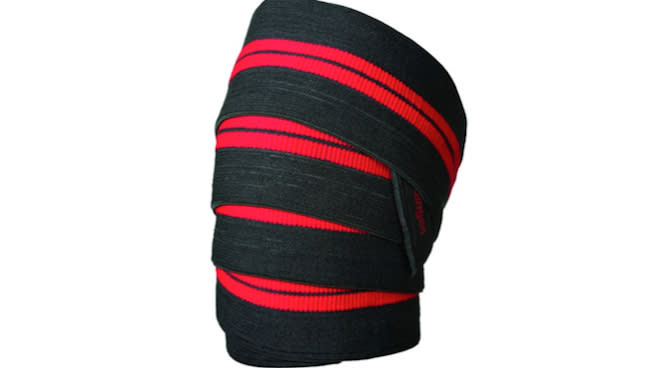
Photo: Harbinger
Some gym rats slap these elastic knee wraps on their legs before they set up to tackle a heavy Squat. “They’re elastic bands that give you more of a rebound out of the bottom of your squat,” says Steve Grosso, B.S., CSCS. “Knee wraps give you [a boost on your Squat].” But they’re not for everyone, and Grosso cautions against slapping them on if you’re just starting to lift. “Unless you compete in strength sports, there is no reason to use knee wraps,” Grosso says. “In that case, they’re just there for a bit of an ego boost."
Weightlifting Belt
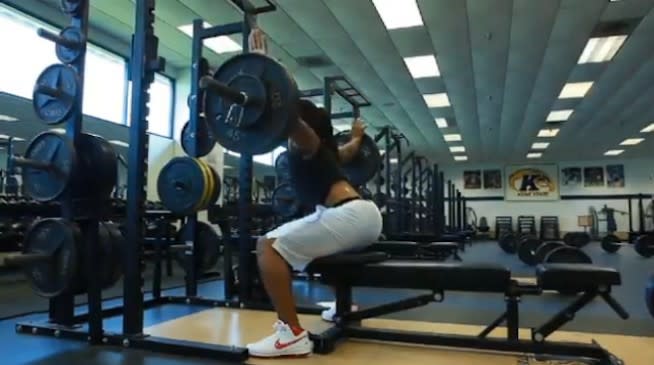
Josh Cribbs
You probably see a few patrons in your gym strolling around with thick leather bands around their waist. “That’s to help stabilize your trunk during big, heavy loaded movements,” Grosso explains. “Squats, Deadlifts—if you do compete in heavy strength sports, maybe an Overhead Press. Any other exercise, unless you have a serious, pre-existing back problem, you’re not going to need it.” Even for heavy lifts—unless you're lifting over 95 percent of your max—avoid using a belt so your core muscles can do the work.
If you’re looking to purchase a belt, don’t plunk down cash on a cheap, ineffective model. “I don’t understand the belts that are wide in the back and skinny in the front—your belt applies pressure from the front,” Grosso says. “If you’re going to get a belt, get one that’s the same width all the way around.”
Fat Gripz/Grip4orce

Photo: Fat Gripz
Ever seen someone slap a thick rubber tube around the bar before they attempt a big lift? They’re probably trying to increase their grip strength. “I love those products,” Grosso says. “They’re for grip strength, and everyone can use more grip strength. Some people use them for benching. You can use them for Pull-Ups, any sort of Row variation, any sort of Curl variation, and they’ll light your forearms up.” The thicker handle makes it more difficult to grip the bar, which challenges your grip while you do the exercise. They essentially turn standard barbells and dumbbells into axle bars.
Chalk
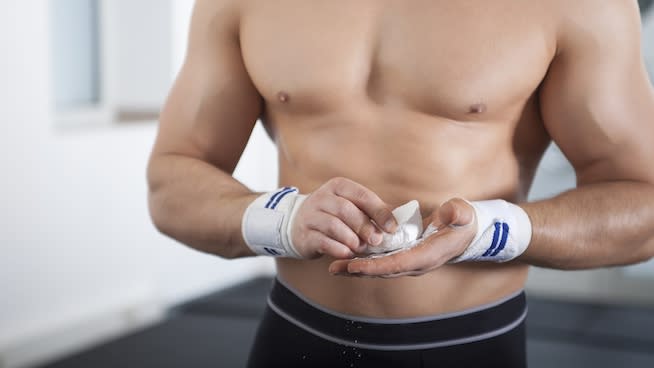
Photo: Thinkstock
That dusty bucket of chalk in the corner of the gym is not the same stuff used to scribble on the blackboard. It’s magnesium carbonate, which is different from the calcium sulfate found in classrooms. “Chalk is used to help with your grip,” Grosso says. “It absorbs the sweat on your hands.” If you chalk up, you might avoid having a slippery, sweaty bar roll out of your hands during a heavy lift.
Lifting Straps
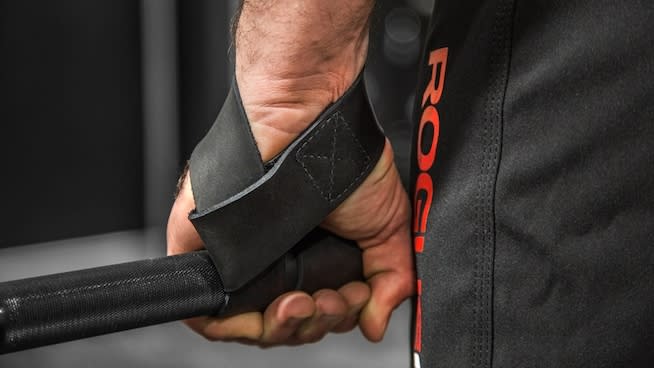
Photo: RogueFitness.com
These things wrap around your wrist and flow into your palm. Like chalk, they give you a better grip on the bar during a heavy lift. “If you want to get the biomechanics of it, straps take wrist and hand flexor strength out of the equation and basically connect your arm to the bar,” Grosso says. “[When you do that], it’s just wrapped around there and connected to your wrist.”
However, athletes should avoid straps, even if grip strength is an issue. Rather than hiding a weakness, lift as much as your grip can handle and add grip-strength exercises to your workouts.
Chains

Steven Jackson - Squat variation with chains
Ever heard chains rattling around on your gym floor? They’re not just for show. “Chains are for accommodating resistance, which has to do with the acceleration curve of the lift, because it’s lighter at the bottom and heavier at the top,” Grosso explains. “They allow you to practice accelerating through heavier weights. They also allow you to change the strength curve of the lift. Again, because it’s lighter at the bottom, heavier at the top, it’s going to overload the lockout portion of the lift [i.e., where you lock your arms or legs out and finish the movement]—whether you’re benching, squatting, or deadlifting with chains. It's another item, which, unless you compete in strength sports, is pretty pointless. Yes, it’s cool to throw chains on the bar and bang them around, but for the average gym goer, it’s not doing much.” Of course, you can also throw a chain around your neck and shoulders during Pull-Ups, Dips or Push-Ups to add static weight to your lift.
Bands
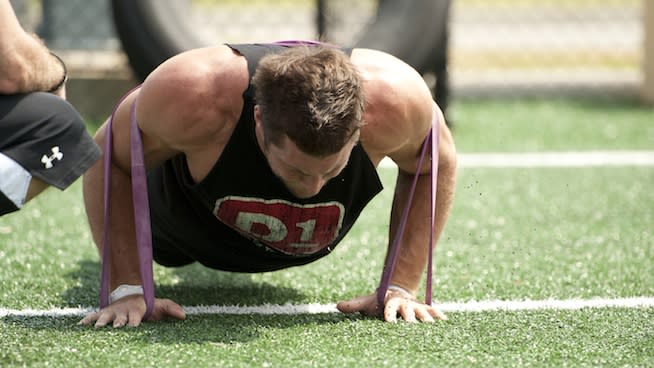
Tim Tebow performing Push-Ups with Bands
Grosso doesn’t think the average gym goer needs to incorporate bands into his or her lifts. He says, "[When training with barbells,] bands are just another form of accommodating resistance. A lot of people prefer bands to chains, because they actively accelerate you back down. You’ve got to take into account the fact that the guys who made bands and chains popular are geared lifters who lift with specific methods for specific reasons. They’re a very limited population. The band and chain work kind of accommodates lifting in gear, because it helps you overload the area where the gear doesn’t assist you, so that’s why you get so much stronger with it.” If you’re not using bands on your barbell lifts, you can loop them around a pull-up or dip bar to help you squeeze out a few extra reps when your chest, back and arms fail. If the bands are positioned above you and your feet are in the loop below you, they help you accelerate upward from the bottom of your lift. “I usually use bands for different activation drills,” Grosso says.
Foam Roller/Lax Ball
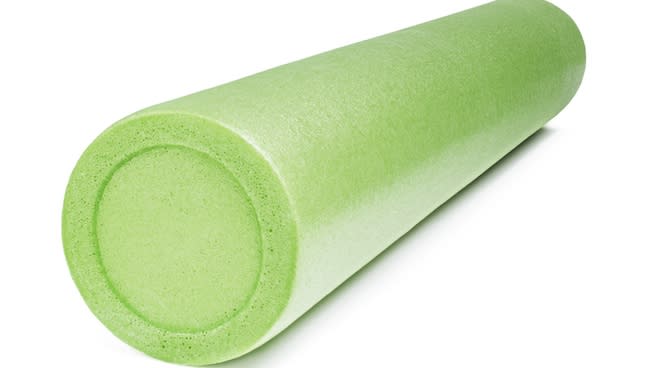
Photo: Thinkstock
Foam rolling has exploded in popularity in the past few years, but many people still don’t know why they’re supposed to be using them. Grosso says they work out knots in your muscles. “Think about your muscles like a rope with a knot in them,” he explains. “If you stretch a rope with a knot in it, you’re just going to pull that knot tighter. So you need to use different self massage tools, like a foam roller or a lax ball, to adjust the density component of your muscles. So you can foam roll and get the knots out of your muscles; then after, you can [static] stretch, and that will help you become more mobile and unlock your joints.”
PVC Pipe/Stick

Photo: YouTube tfwimn
You may have thought your gym staff forgot to take out the trash, but these simple tools can be powerful allies during your training. Besides helping newbies learn proper form on basic lifts, a PVC pipe or stick can be a fantastic tool to help you stretch. “I use them for Shoulder Dislocations,” Grosso says. “Shoulder Dislocations are one of my favorite moves. If you do about 100 Shoulder Dislocations and 100 Band Pull Aparts per day, you’ll pretty much never have shoulder problems.” You can stretch your chest, back and any other muscle group with a PVC pipe or stick, so don’t forget to grab this one (after you foam roll, of course).
This article originally appeared on STACK.com: Common Lifting Accessories and What They Do For You



